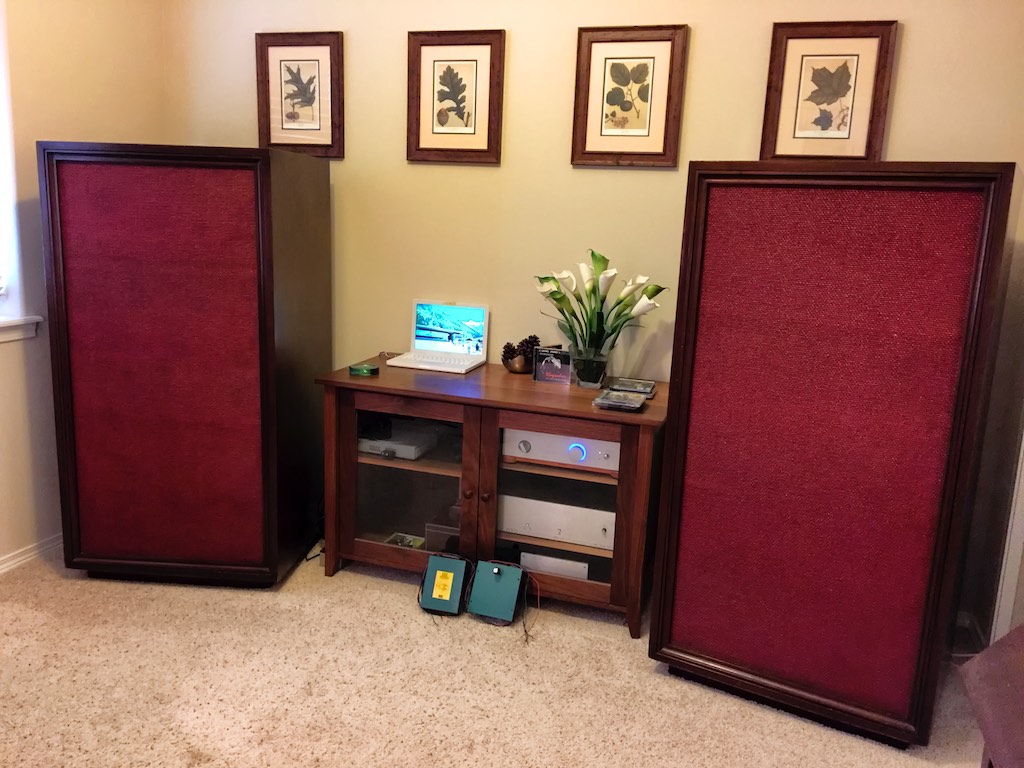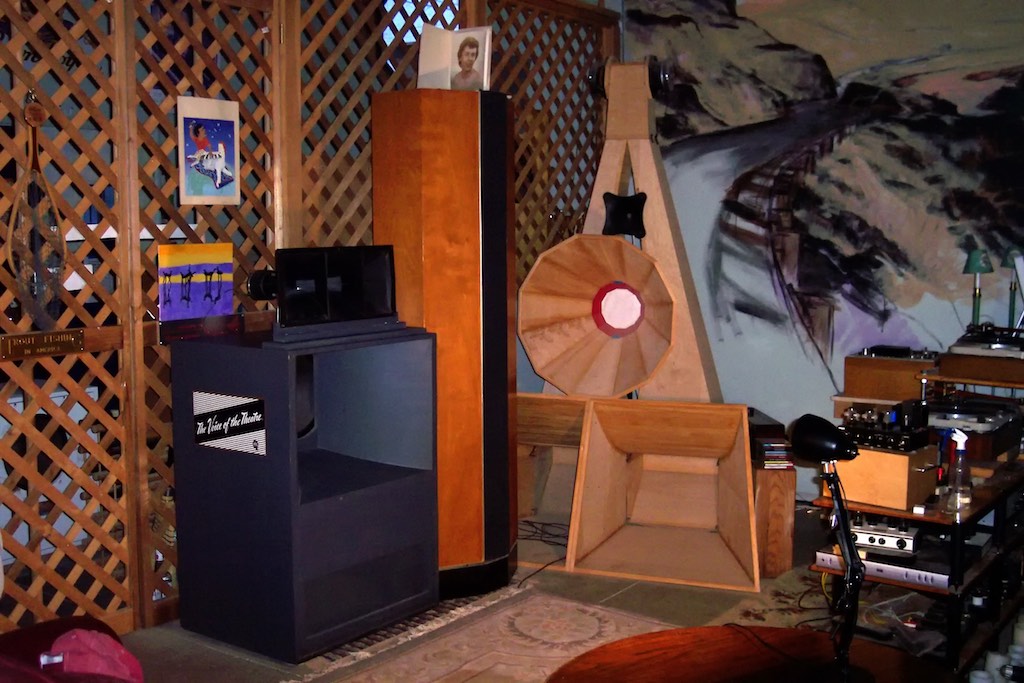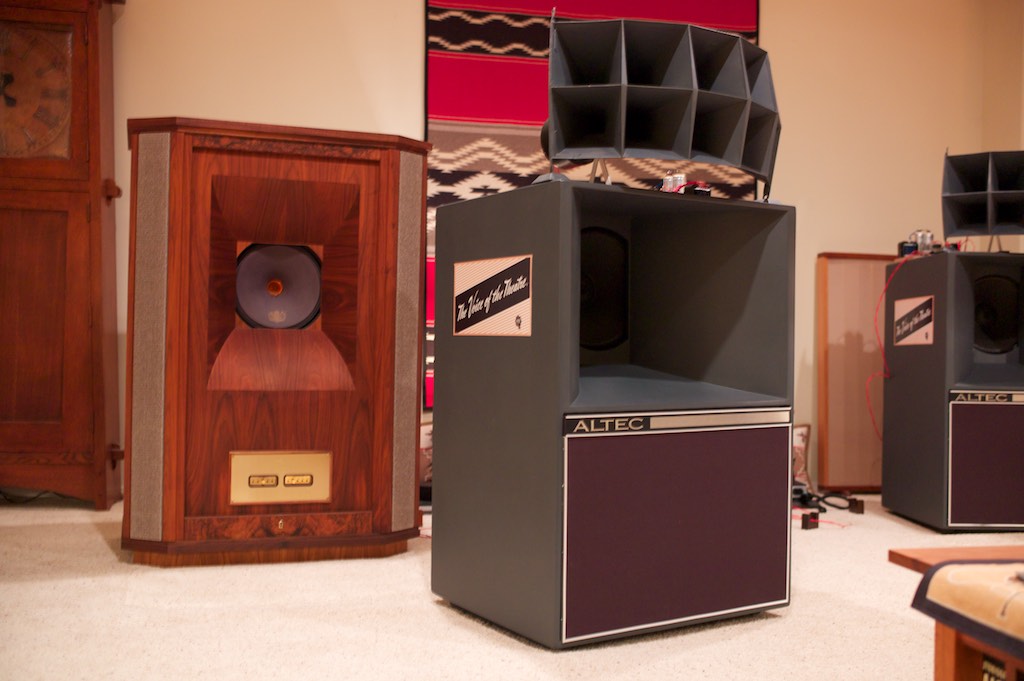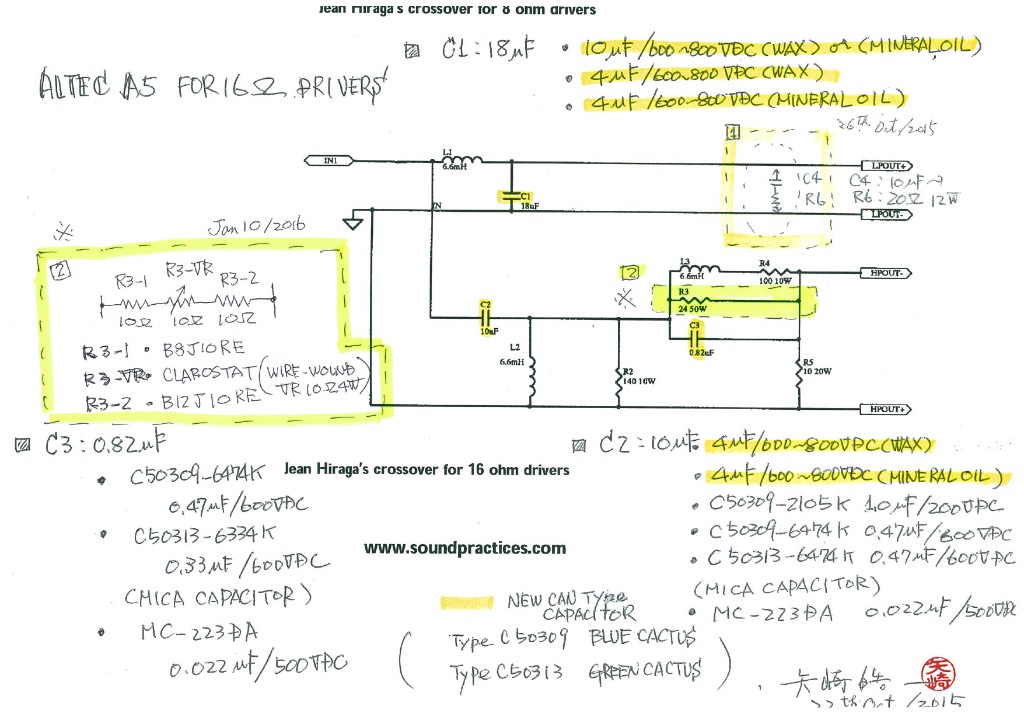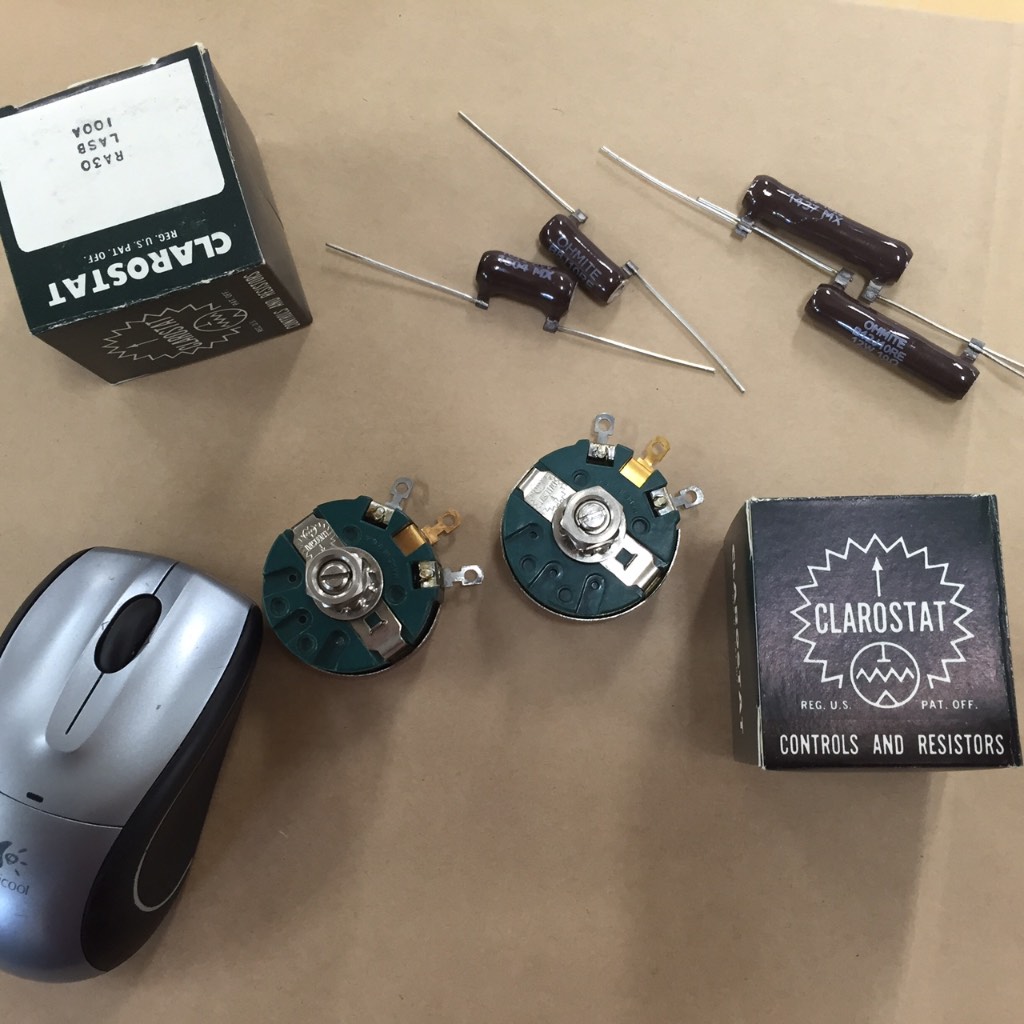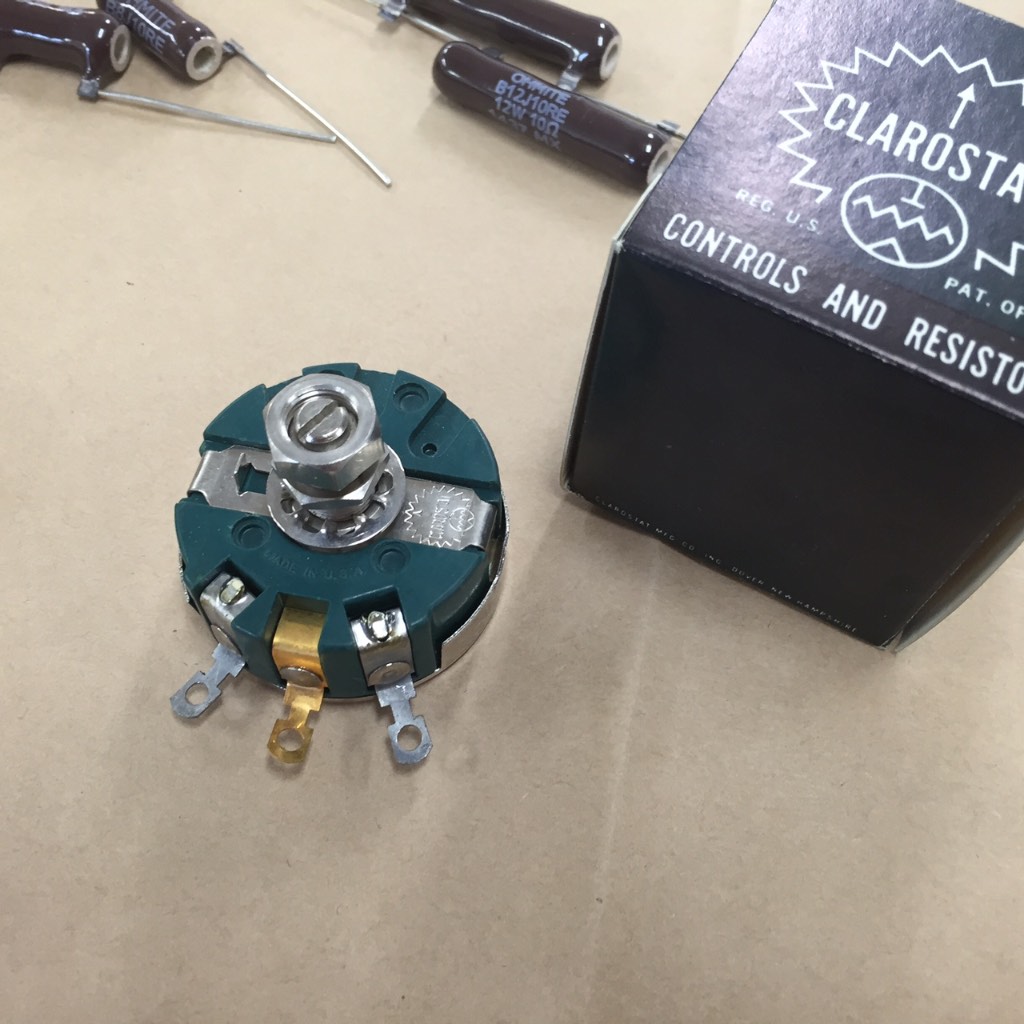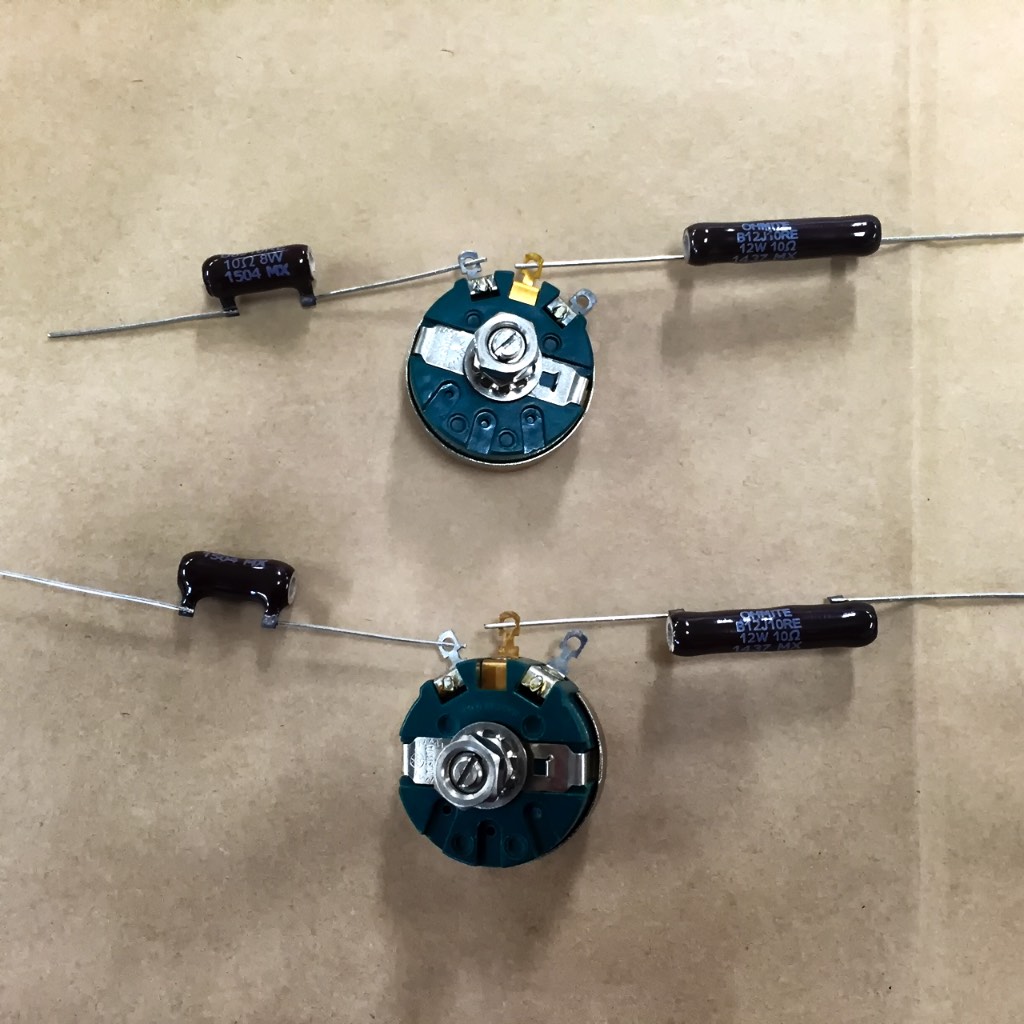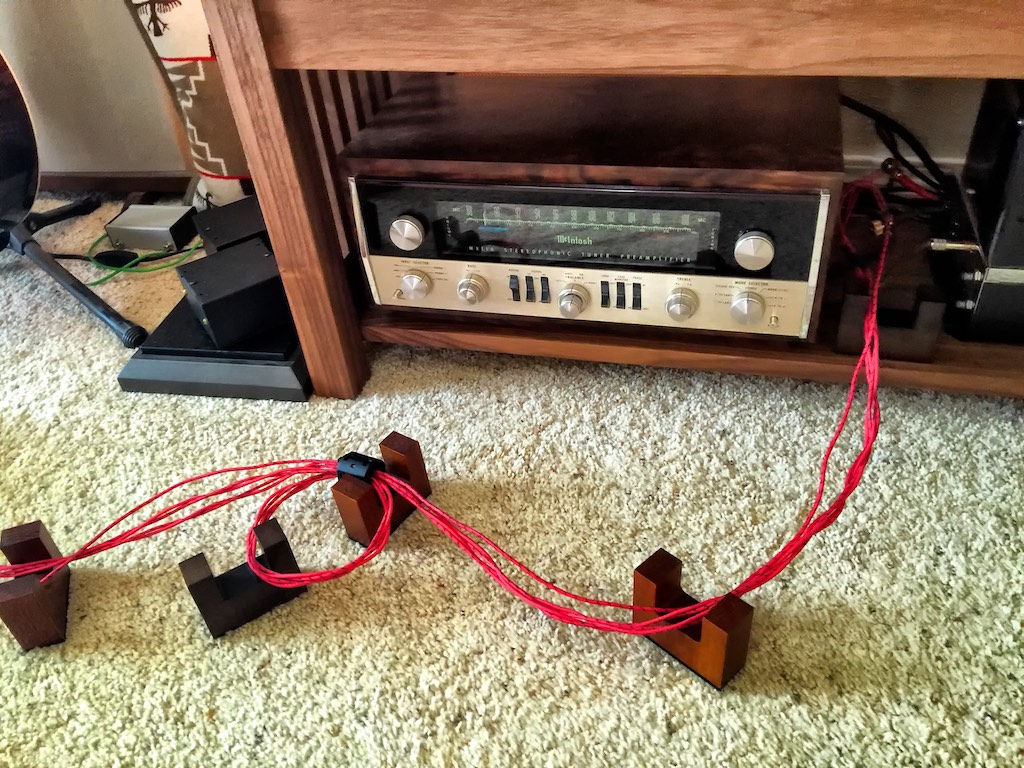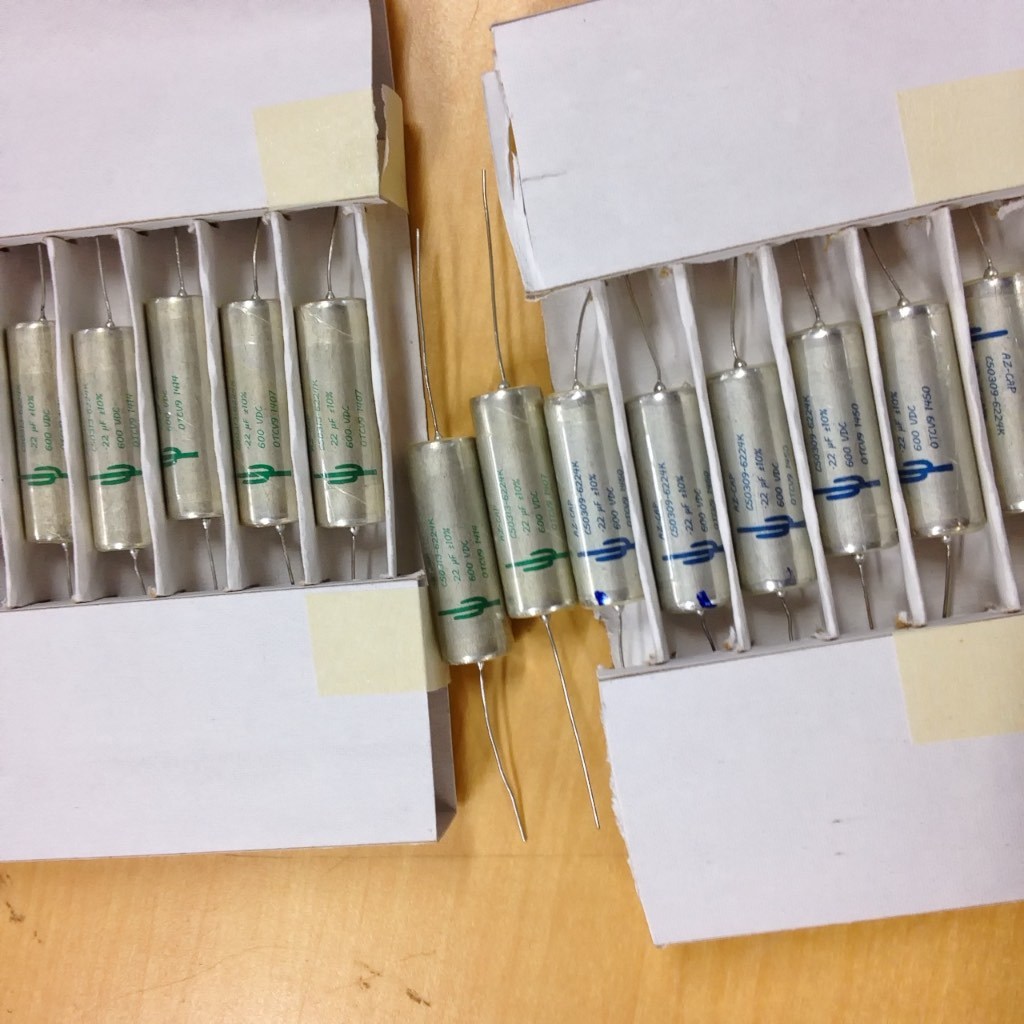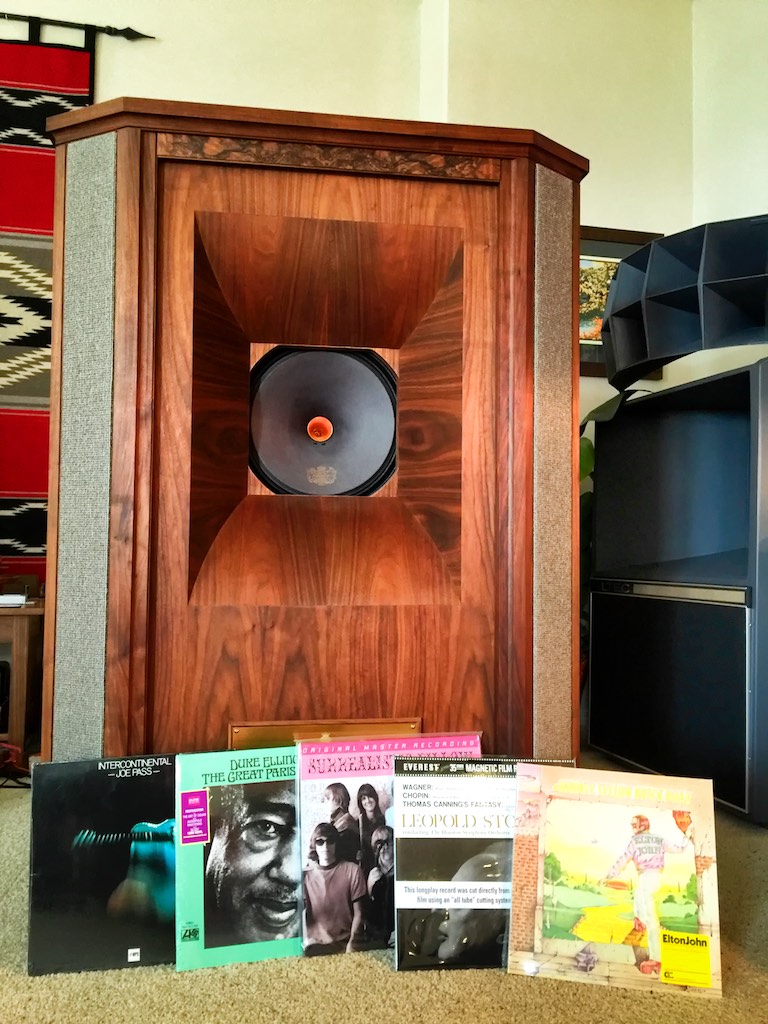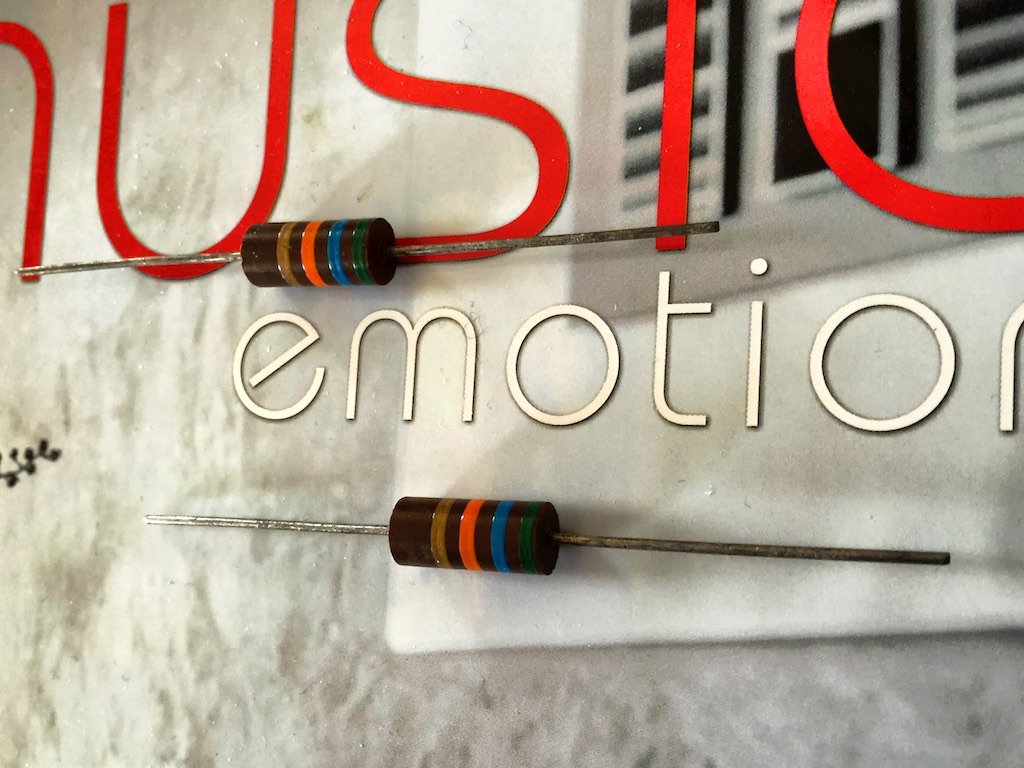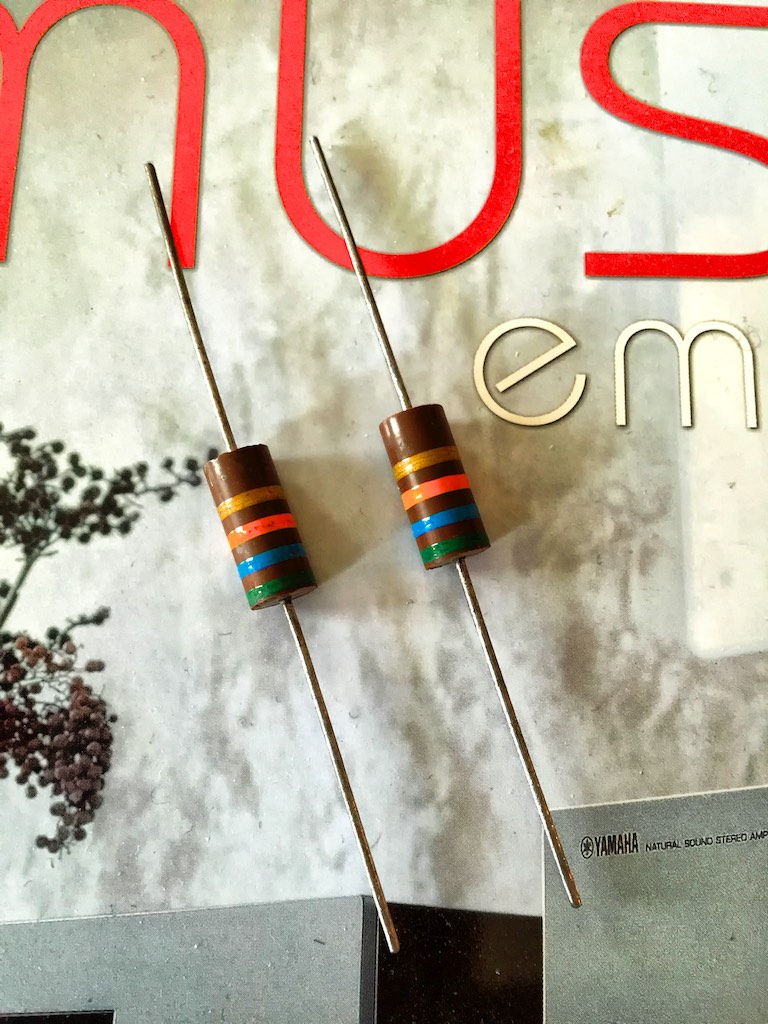It has been bitterly cold here in my part of the Pacific Northwest until this last week, when temperatures soared into the high 40's and low 50's (Fahrenheit).
The skiers & snow boarders have been happy with all the snow in the mountains, but us bicycle riders in the flatlands a little less so.
The previous below freezing temperatures have kept me off my bikes, and it's been a good time for investigating the mysteries of the audio universe in the warmth of my home.
Speaking of the universe, did you see where the LIGO scientists successfully detected gravitational waves? Man that is cool, Einstein would be thrilled if he was still around! Kudos to the cool cats at LIGO!
I had a chance to visit a LIGO facility a few years back, and if you ever get the chance you should do a visit. The LIGO laser interferometers are amazing, and it's always fun thinking about the implications of space-time relationships and multiverses!
I got three days of lunchtime rides in on my office Trek this last week as the temperatures soared above freezing! It was great!
Just going out for a ride in the sunshine and getting a little fresh air always perks me up and puts a smile on my face.
Those first rides of the year always bruise the behind, so this morning I'm taking it easy on the sit bones, and drinking a little coffee while listening to Jazz24 with the Stokowski VOTTs & SPEC RSA-M3 EX amplifier combination.
It absolutely amazes me how good the VOTT-SPEC combination sounds, and how incredibly mesmerizingly it plays music, and that's using my very modest pair of digital sources of an old MacBook to stream music to my trusty Mhdt Paridisea+ vacuum tube USB DAC, or my venerable Sony PlayStation SCPH-1001 to play CDs.
I know Yazaki-san has a lot of expertise in the digital source realm, so one of these days when I get ready to upgrade my digital sources, I want to talk with him about ideas for a 'Real Sound' digital front end to purchase.
I really like the tactile treat of playing physical media. I want a disc-player so I can enjoy playing my collection of 1000+ Red Book standard CDs, but I also want to be able to stream Jazz24 from my Mac computers, so my future disc-player must be able to accept a USB input from my computer, and I want it all to sound beautifully analog-ish on a comparable plane to my Garrard Project 2015 player system, or Yazaki-san's amazing turntable (you should see it in person, it's stunning!).
That's a tall order, but that's about the only thing that would get me interested enough in digital to make a change from my simple & rustic digital system, which sounds surprisingly good.
My second course after my coffee this morning was a Mimosa. I used fresh squeezed orange juice and some LaMarca Prosecco to make the Mimosa, which I actually prefer to the normal combination with Champagne (heresy!).
My French grandmother would not have approved! (But my Italian girlfriend probably would have!)
I would never have anything like a Mimosa with breakfast normally, but when I visited our local French restaurant last weekend to take my Mom out for brunch, I had a Mimosa, and it hit the spot!
Speaking of VOTTs, did you notice those Altec N-500-D crossovers in the photos above? Gary Fischer sent me a pair of the Altec N-500-D crossovers to replace the pair of malfunctioning Altec N-500-C crossovers that he provided with my A5 VOTTs.
The N-500-D crossovers are the same one's that are used in the Stokowski VOTTs, and given how good the Stokowski VOTTs sound, I'm really excited to hear the N-500-D crossovers on my A5 Voice of the Theatre loudspeakers.
Gary Fischer sent me an email after he read this post, commenting on my wondering if Stokowski could have been involved in the choice of components for his VOTTs - probably not according to Gary.
"Your Stokowski A-7 pair came out of the Altec factory some time before 1964. The 803B woofers, 802D 16 ohm compression drivers, 511B horns, and N-500-D dividing network crossovers, are the same components as standard A-7's, but obviously the cabinets are custom built by Altec. Altec changed the name of their 803B woofer to 416A sometime in 1964. This is exactly the same 16 ohm woofer as the 416A, but they changed the name because Altec also had an 803 horn (8 cells, 300Hz), and it was confusing to have two different components with the same number."
The Stokowski VOTTs actually have the 804A 16 Ohm compression drivers rather than the 802D 16 Ohm versions that Gary mentions (Thanks for catching that mistake, Rick!), but the 803B 16 Ohm bass drivers, 511B horns, and N-500-D crossovers are correct.
I haven't listened to the 802D 16 Ohm driver Gary mentions, but I really like the 804A 16 Ohm compression drivers that are combined in the Stokowski VOTTs with the 803B 16 Ohm bass drivers, 511B horns, and N-500-D crossovers. I don't know how much the custom cabinets of the Stokowski VOTTs contributes to their sound, but I suspect the Altec A7 VOTTs with their similar combinations of components will sound great as well.
Incidentally, Pete Riggle just picked up a pair of 8 Ohm versions of the A7 VOTTs (above), about which he says, "These are A7 500-8 units, with a nominal impedance of 8 ohms. They were manufactured in 1976. The woofer is the 416-8A. The horn is the 511B. The compression driver is the 802-8D. The crossover is the N501-8A ... The sound is similar to what I heard at Jeff's place with the Stokowski A7 speakers. Of course it was Jeff's A7 speakers that got me interested."
By the way, Daryl at Arizona Capacitors is building the six 6.6mH inductors for the A5 Voice of the Theatre crossover project right now. In his last communication he told me,
"As mentioned in an earlier email, we are getting ready to start on the foil coils. Typical designs are copper foil, with a polypropylene insulator. We can certainly make these, but ... I personally like the path less traveled. My small amount of knowledge in this area, tells me one of the issues with foil coils is movement within the device. That said, I'm leaning towards a paper insulator, then fully impregnated. This will "lock" all of the layers together giving a very different device. We can send them like that, or further encapsulate them in phenolic housings, with epoxy resin. We could also do polypropylene with wax ... these are going to be pretty large coils, so I'm not sure how many I can make with the amount of foil we purchased, otherwise I would suggest a few different iterations."
I'll really excited to see what Daryl decides upon. To give you an idea of the size of the 6.6mH inductors that Daryl is building, the Duelund CAST inductors used in my Westminsters' crossovers are 4.0mH & 1.0mH, and you can see their scale compared to an LP below.
The Altec N-500-D crossovers are adjustable (actually I think all the Altec professional crossovers are adjustable), and that is really handy for dialing the amount of high-frequency horn attenuation needed to balance out the sound for varying sized rooms.
Yazaki-san and I have decided to incorporate adjustability into the Hiraga-san A5 crossover design to make it easier to integrate into different rooms here at Jeff's Place.
Yazaki-san told me, "This is my latest idea for R3. This wire wound variable resistor is 10Ω / 4W. The wire wound resistors are Brown Devils, B8J10RE and B12J10RE, each 10Ω. In Jean Hiraga-san's diagram, R3 is 24 Ω, and this resister's adjustable value will be from 20Ω to 30Ω. R3 is so important resistor for the final sound quality because that the current that drives the 288 driver flows through this resister."
"In my experiences, we could improve the sound quality of capacitor by parallel connection but for the resistor, series connection sometimes brings out remarkable results. And also these resisters and the variable resistor are the best quality resisters, so that we could get the first class effects."
"B8J10RE and B12J10RE have very clear and rich tonal character, but the sound is a little bit different. B12's sound is so rich and gorgeous mid to mid-low range just like vintage American sound. But B8's sound for high range is more clear and well balanced timbre. And I intend to blend each virtue of these splendid resister."
Needless to say I'm really excited about the A5 crossover adventure, and I'm trying my best to be patient (Not!).
Preview of coming attractions here at Jeff's Place:
One. First in line is finishing up the unexpectedly challenging vintage MX110Z adventure. We'll start with a resistor adventure for the MX110Z phono inputs, then continue to track down the pesky edginess that crept into the upper midrange, and we'll do our best to optimize each modification we've made until we get a components mix that we can whole-heatedly recommend to those who'd like to try duplicating what we've done.
I expect the outcome will be fantastic, but it's going to take some time to work through.
I'm really looking forward to the rest of the MX110 adventure, as it's going to be a real learning experience working through all the permutations of the modifications, and describing the sound of various components for you.
Two. Second in line is the Duelund CAST hybrid silver-copper 6.8uF capacitors. Once I've got the MX110Z sorted out suitably, I'll be able to write more about the exciting new Duelund CAST silver-copper hybrid 6.8uF capacitors' performance in my Duelund CAST crossovers of my Tannoy Westminster Royal SEs.
As you know, the pure silver 6.8 Duelund CAST capacitors are used in the C1 positions of my Westminsters' crossovers, and they are utterly amazing, and my baseline for all comparisons.
I want to make sure that I've got the MX110 sorted out completely first, so I can get a clear understanding of how the Duelund CAST hybrid capacitors are working in the circuit compared the their Duelund CAST pure copper foil & silver foil counterparts.
I pre-conditioned them on my Audiodharma Cable Cooker, so they're ready to go when the time comes.
Many thanks to Frederik for being so patient with me during this process of sorting out the MX110!
Three. Third up is the A5 Voice of the Theatre project. Once I have the rest of the components in hand I'll start breadboarding the crossovers for the A5 Voice of the Theatre adventure in earnest.
I am so excited about this project! I have dreamed all of my audio life about having a pair of A5 Voice of the Theatre loudspeakers, and now that day is here!
It will be exciting to squeeze out every drop of their considerable performance potential! Did I mention I'm really excited about this project? I am!
A very special thanks to Yazaki-san for all of his contributions & insights to make this project a success, and many thanks to Daryl at Arizona Capacitors for developing the custom inductors, and for providing capacitors for the project. You guys are the best!
Four. Fourth up is something you haven't heard about yet. Another really exciting development is an upcoming Real Sound adventure with Ron-san's vintage Audio Research SP-6C preamplifier.
Yazaki-san had Cc'd Ron and I on a Real Sound adventure he is doing with reader Mark Paul on his vintage Audio Research SP-6C.
Upon reading about it, Ron told me he was really intrigued by what Yazaki-san & Mark-san were doing with the SP-6C, as he too has a beloved SP-6C that is in need of restoration.
Ron's such a great friend, and as a way to show my appreciation for all his help - Ron has made all of the Real Sound adventures possible that you've read about here at Jeff's Place - I had the idea of buying a set of the Real Sound components from Yazaki-san to restore Ron's SP-6C, and then giving it as a gift to Ron as a way of saying "Thank you!"
Well, the ever gracious & generous Yazaki-san didn't allow me to buy them for Ron, as he wanted to present them to Ron as a gift:
"About the parts, please don't worry about the payment. I would like to present the modification kit to Ron-san. Because the circuit design of SP-6C's phono EQ was taken from the Marantz model 7, you could hear the differences of the sound and musicality between your MX110 and SP-6C with great interest, I suppose."
That was really nice of Yazaki-san!
I guess Ron will have to suffer through me buying he & Sumie-san some bottles of nice French wine as a way of saying thanks instead!
But seriously, many thanks to Yazaki-san and Ron-san for everything they do to make Jeff's Place so wonderful to come home to! I feel truly blessed to have such fantastic friends!
Five. My fifth coming attraction is writing up the McIntosh MX110Z and Audio Research SP-6C adventures as a feature article for Positive Feedback, and it will include something very special indeed:
It turns out that one of Yazaki-san's best friends, Kato-san, is a tube amplifier enthusiast who is also an authority of analog circuit design, and Kato-san is willing to explain to us all about the differences in the design concepts of the phono EQ between the McIntosh C22 (my buddy Leo's got one), the McIntosh MX110Z (lot's of those here!), the Marantz Model 7 (like Yazaki-san's), and the Audio Research SP-6C (Ron's and Mark's).
That is another really exciting development, and I'm really looking forward to hearing all about it!
Six. Yazaki-san has really intrigued me with the history of that fine old American capacitor manufacturer, West Cap, whose reputation for quality capacitors was legendary.
West Cap was known for their vintage military spec capacitors, and the classic 'American' sound they contributed to vintage audio gear and guitar amplifiers in the USA back in the day.
Many have lamented the passing of West Cap from the capacitor scene.
Guess what? West Cap didn't really go anywhere! West Cap is still completely intact, thriving, and producing capacitors in America, and they have all the documentation in place to produce anything that they every did, and even more.
West Cap has been flying under the radar for years because of a name change when they were purchased by another company. As Shakespeare told us, 'a rose by any other name would smell as sweet', and that is indeed the case with West Cap, who now goes by the name Arizona Capacitors.
I'm going to be interviewing one of the original owners of West Cap, and sharing about all things West Cap with you.
That owner would be Daryl Stahler. Yes, that's the same Daryl that's making the custom 6.6mH inductors for the A5 Voice of the Theatre project.
Do you sense there's some really magical things about to happen here at Jeff's Place? There are!
Ok, so I got really carried away with this post, so that's it for today. The FedEx driver just dropped off my latest order from Chad over at Acoustic Sounds, and now I've got some new LPs to listen to!
Breaking news!
Right after I posted this update I went out to check the mail and there were 2 matched pairs of NOS Allen Bradley 56K Ohm 2Watt carbon comp resistors waiting for me.
Monday Ron-san and I are getting together to perform a resistor-ectomy on the MX110, and I'll report back on the results.
***
I got up this morning, got all dare-devilish, and then removed the Tepro 47K resistors off my MX110's PH2 inputs and soldered in a pair of the NOS Allen Bradley 56K Ohm 2 watt carbon comp resisters that arrived in the mail yesterday in their place.
I was proud of myself that I didn't screw it up and the MX110 would actually play music after the substitution.
As you can see in the photo below, the NOS Allen Bradley 56K Ohm 2 watt carbon comp resisters are huge compared to the Tepro RA resistors! You can see a black Tepro RA resistor to left of the Allen Bradley resistors, just above the X5F.
Andy Moore was right on, these NOS Allen Bradley 56K Ohm 2 watt carbon comp resisters are great sounding resisters, and they were a big step in the right direction for the MX110. Thanks for the tip, Andy!
The NOS Allen Bradley 56K Ohm 2 watt carbon comp resisters sound rich, natural, with great timbre, have lots of body, and a dramatically big sense of space. Most importantly, the Allen Bradley's reduced the edge & shoutiness by a lot (but not all of it).
So while I'm not 100% sure, I think maybe the 47K Ohm Tepro RAs are the culprit for the sonic issues with the MX110s, or at least they appear to be a major contributor. That doesn't mean they are a bad resistor, they just aren't a very good match in Modification A for the MX110's phono inputs.
Interestingly, my Ortofon SPU Classic GM MkII stereo cartridge is affected more by the difference between the Tepro RA and Allen Bradley carbon comp resistors than is my Ortofon SPU Mono CG 25 Di MkII.
I'm ordered more sets of the NOS 56K Ohm Allen Bradley's to use as controls for George's & Leo's MX110s PH2 phono inputs too, that way we will be able to compare apples-to-apples, so to speak, as we work through listening too and voicing the other modifications.
I'm also ordered a few pairs of NOS 47K Ohm 2 watt Allen Bradley resistors, with the idea of removing the Tepros we added in for Modification C at R116/R117, and then substituting the Bradley's, which I'm hoping will completely address the issues I'm hearing, so I can then begin to focus in on characterizing the sound of the Red Cactus, Blue Cactus, and Green Cactus Arizona Capacitors in Modification B.
Thank you for stopping by, and stay tuned for many exciting things to come!
From my home to yours, may the music playing make you happy!






